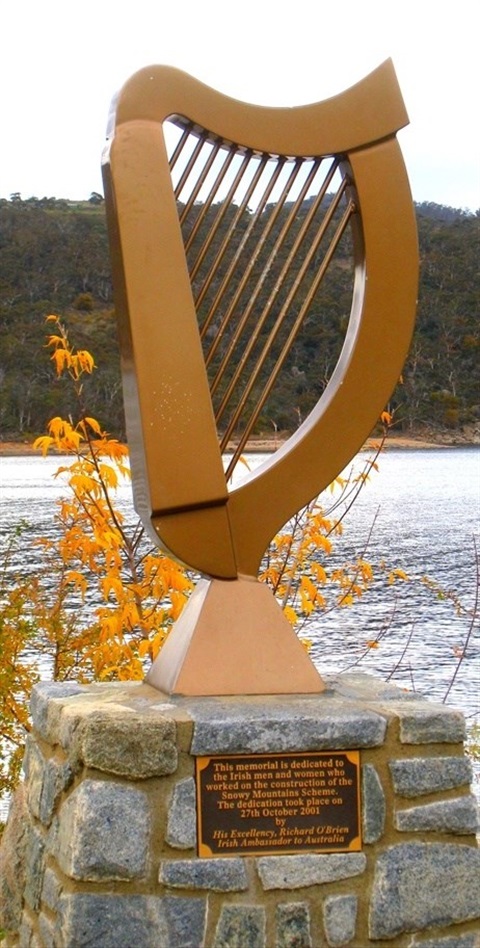Harp Memorial

Description of Work
The Irish Harp is a monument dedicated to the Irish men and women who worked on the Snowy Mountains Scheme.
When the Snowy Mountains Hydro-electric Authority was established in 1949, there was a serious national shortage of skilled personnel, equipment and construction materials as a legacy of World War II. The Snowy began an intensive recruitment campaign overseas; concentrating in Europe. The Scheme also absorbed many of the migrants who were arriving in Australia in response to the Commonwealth Government's Immigration Scheme in the post-war years. Overall, 100,000 people worked on the Scheme's construction between 1949 and 1974 two-thirds of them migrant workers. The workforce reached a peak of 7,300 in 1959. Workers from over 30 countries including Australia, Austria, Finland, Jordan, Russia, USA, Ireland, Scotland, Wales, England, Germany, Norway, Sweden, Cyprus, Czechoslovakia, Hungary, Poland, Switzerland, Turkey, Estonia, France, Portugal, Italy, Greece, Rumania and The Ukraine worked on the Scheme through planning and construction.
In 1999, it was the 50th anniversary of Snowy Mountains Scheme and a group of local Irish residents organised a reunion. This reunion raised over $6,000 in funds. John McLoughlin, Harry Cummins and Albert Costello decided to use the funds to construct a memorial to the Irish workers. John's brother in Ireland sent him some small tourist shop sculptures of harps and bridges, and the group decided on the Harp, as it is the national emblem of Ireland. From there, they went about organising the construction of the Harp and after some funny location discussions, the Harp now has pride of place on the lake's edge. Actor Gabriel Byrne called the memorial "most impressive" and has written an article on his experiences in Jindabyne and the significance of the Harp to Irish history.
Location of Art
Lake Jindabyne Foreshore, Banjo Paterson Crescent, Jindabyne NSW
Installed
2001
Primary Materials
Steel
Type
Monument